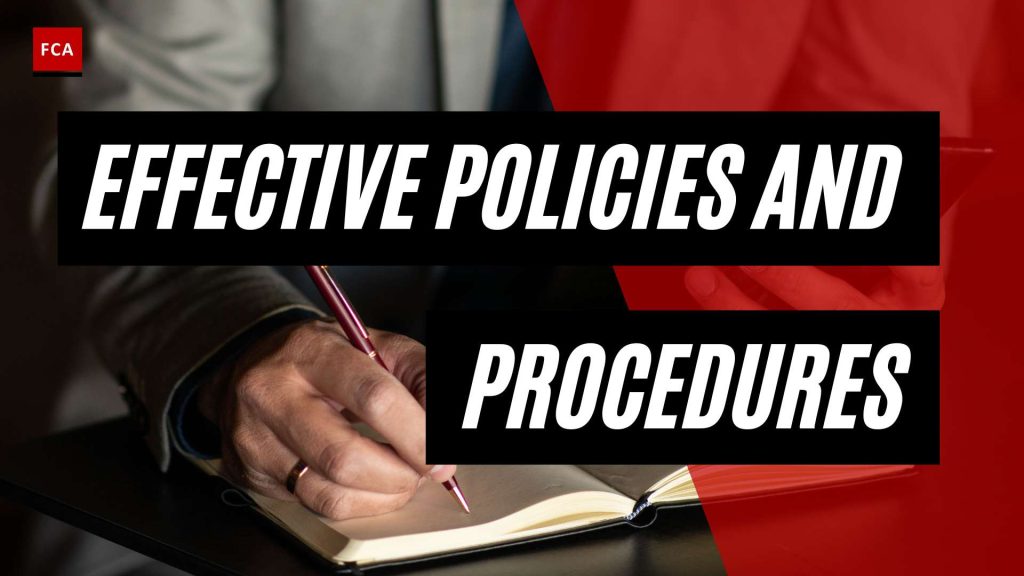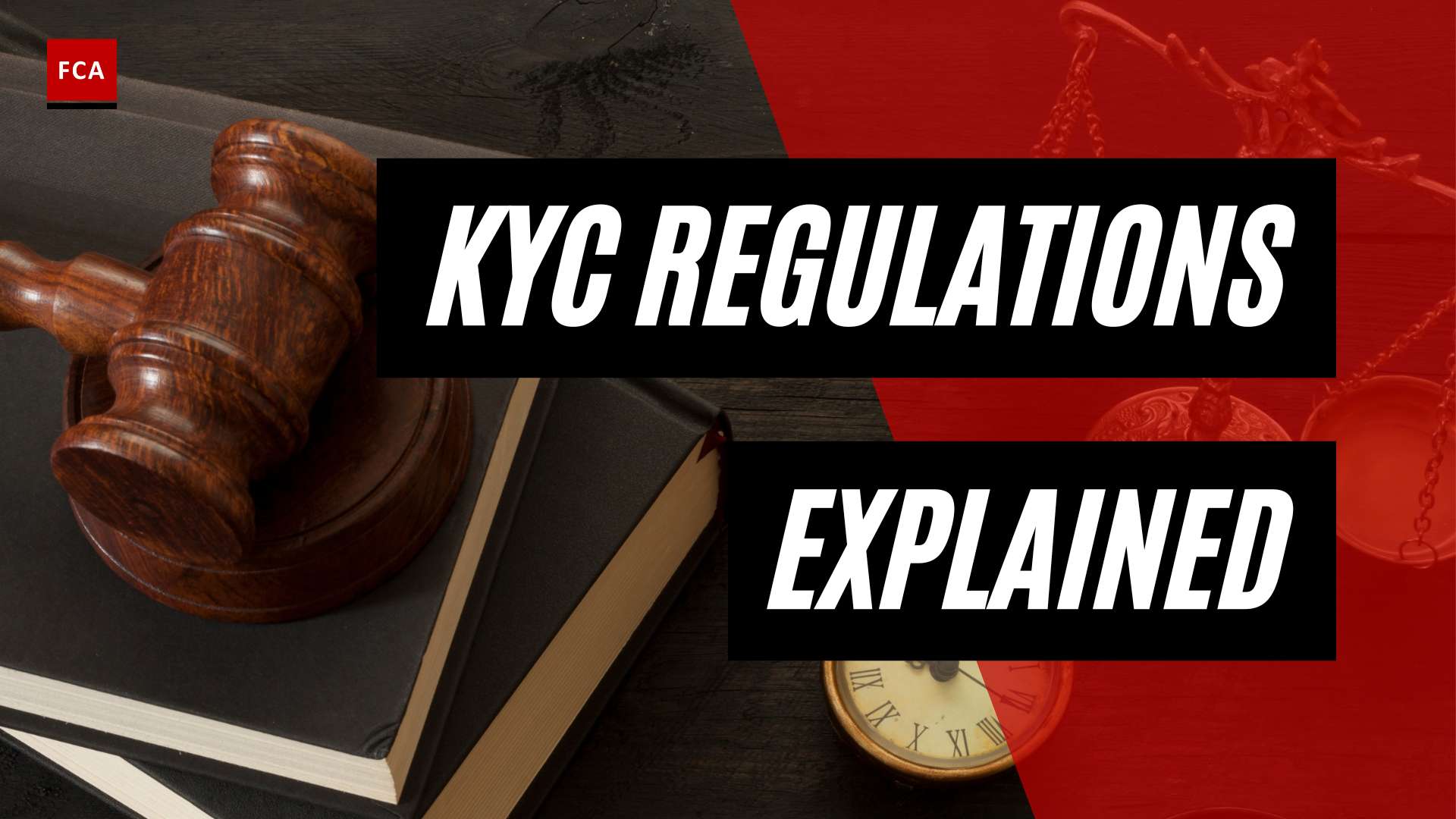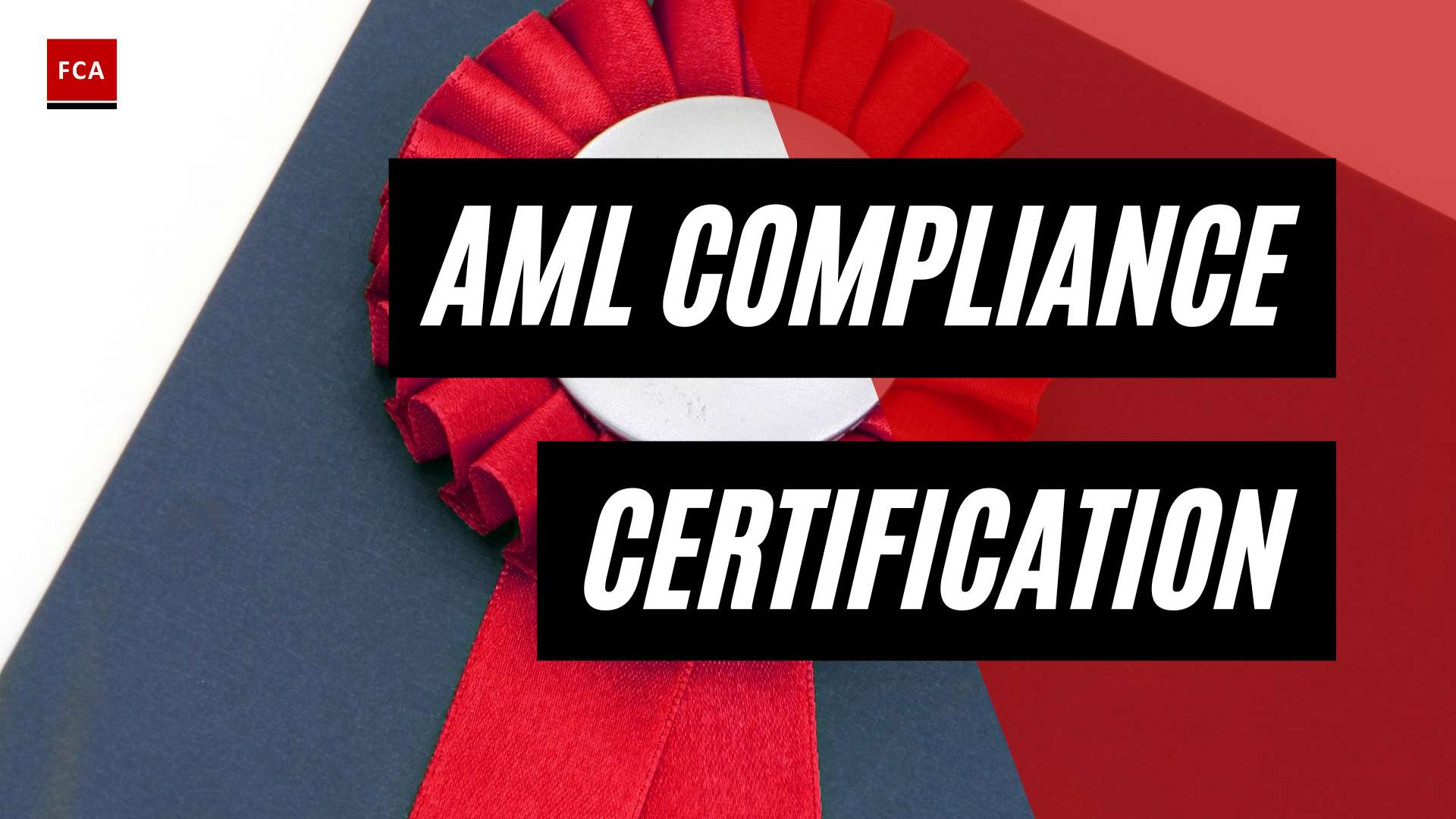Developing an AML Compliance Program
To effectively combat money laundering and ensure regulatory compliance, financial institutions and organizations must develop a comprehensive Anti-Money Laundering (AML) compliance program. This program establishes the necessary framework and guidelines for preventing and detecting money laundering activities. It consists of various components that collectively contribute to a robust AML compliance system.
Importance of AML Compliance
AML compliance is vital for financial institutions to adhere to regulatory requirements and combat financial crime. Money laundering poses significant risks, such as facilitating tax evasion, fraud, and terrorist financing. By implementing strong AML policies and procedures, institutions not only comply with regulations but also protect themselves from potential reputational damage and financial losses associated with money laundering activities (Bolder Group). It is crucial for institutions to stay informed about changes in regulations and enforcement actions to ensure that their AML policies and procedures remain effective (Bolder Group).
Components of an AML Compliance Program
An effective AML compliance program consists of several key components that work together to establish a strong foundation for preventing money laundering and terrorist financing:
-
Detection of Suspicious Activities: AML compliance programs include measures to detect and report suspicious activities related to money laundering. This involves implementing transaction monitoring systems, conducting customer due diligence (CDD), and establishing processes for the identification and reporting of suspicious transactions.
-
Comprehensive Policies and Procedures: AML policies and procedures form the backbone of an effective compliance program. These policies typically include customer due diligence (CDD), suspicious activity monitoring and reporting, and internal controls to prevent money laundering and terrorist financing (Bolder Group). These policies should be tailored to the specific risks faced by each financial institution, taking into account factors such as size, complexity, and customer base (Bolder Group).
-
Customer Risk Assessments: AML compliance programs involve conducting risk assessments to evaluate the level of risk associated with customers and clients. This assessment is typically performed through a Know Your Customer (KYC) program, which helps identify and verify customer identities, assess their potential risk, and determine the appropriate level of due diligence required.
-
Independent Audits: Regular independent audits conducted by third-party organizations help ensure the effectiveness of an institution’s AML compliance program. These audits assess the adequacy of policies and procedures, identify any gaps or weaknesses, and provide recommendations for improvement.
-
Continuous Monitoring, Testing, and Training: A successful AML compliance program requires ongoing monitoring, testing, and training. Monitoring involves regularly reviewing transactions and customer activities for suspicious patterns. Testing ensures that policies and procedures are functioning effectively. Employee training is crucial to ensure awareness of AML regulations, reporting obligations, and risk mitigation techniques.
By incorporating these components into their AML compliance program, financial institutions can establish a strong regulatory foundation, mitigate the risk of money laundering, and protect themselves from legal issues (Flagright). A well-designed and implemented AML compliance program not only enables institutions to comply with regulations but also promotes a culture that benefits the organization in the long run (Flagright).
AML Policies and Procedures
To effectively combat money laundering and ensure regulatory compliance, organizations must establish comprehensive Anti-Money Laundering (AML) policies and procedures as part of their AML compliance program. These policies and procedures serve as a guide for employees and outline the necessary steps to identify, prevent, and report suspicious activities. Let’s delve into the overview, key elements, and importance of regular updates and adaptation.
Overview of AML Policies and Procedures
AML policies and procedures provide a framework for financial institutions and businesses to adhere to regulatory requirements and combat illicit financial activities such as money laundering and terrorist financing. These policies and procedures should cover detailed instructions on how to monitor, investigate, and report suspicious activities, ensuring compliance with regulations (Trulioo). They are designed to establish a robust system that enables organizations to identify and mitigate the risks associated with money laundering.
Key Elements of AML Policies and Procedures
Several key elements should be included in AML policies and procedures to ensure the effectiveness of the compliance program:
-
Customer Due Diligence (CDD): AML policies should include procedures for conducting thorough customer due diligence, including verifying the identity of customers, understanding the nature of their business or transactions, and assessing their risk level. This helps organizations identify and manage potential money laundering risks associated with their customers.
-
Suspicious Activity Monitoring and Reporting: Policies should provide clear instructions on monitoring and identifying suspicious activities that may indicate potential money laundering or other illicit financial transactions. Employees should be trained to recognize red flags and report any suspicious activity promptly to the appropriate authorities.
-
Internal Controls and Risk Management: AML policies and procedures should outline internal controls and risk management practices to mitigate the risk of money laundering. This includes implementing systems for ongoing monitoring, periodic risk assessments, and internal reporting mechanisms to ensure compliance with regulations and minimize potential vulnerabilities.
-
Training and Awareness: Organizations should establish a comprehensive training program to ensure employees are knowledgeable about AML policies and procedures. Training should cover topics such as recognizing suspicious activities, understanding regulatory requirements, and reporting obligations. Regular training helps maintain a strong culture of compliance throughout the organization.
Regular Updates and Adaptation
The area of AML compliance is constantly evolving, with new regulations, enforcement actions, and emerging risks. Therefore, it is crucial for organizations to regularly review and update their AML policies and procedures to remain effective and in compliance with current regulatory requirements. Regular updates ensure that organizations can adapt to evolving risks and regulatory changes, enhancing their ability to detect and prevent money laundering activities.
By staying informed about changes in regulations, enforcement actions, and emerging industry practices, organizations can make necessary adjustments to their AML policies and procedures. This includes revising risk assessments, updating internal controls, and providing additional training to employees.
Implementing strong AML policies and procedures is not only essential for regulatory compliance but also protects organizations from potential reputational damage and financial losses associated with money laundering activities (Bolder Group). Regular monitoring, updating, and adaptation of AML policies and procedures help organizations effectively combat money laundering and maintain a strong culture of compliance.
In the next section, we will explore the importance of effective communication of AML policies and procedures, training for employees, and the role of the compliance officer in ensuring AML compliance.
Communication and Training
In order to develop an effective AML compliance program, it is crucial to focus on the communication and training aspects. This ensures that all employees are well-informed about the AML policies and procedures and understand how to implement them correctly. Additionally, the compliance officer plays a key role in overseeing and facilitating these communication and training efforts.
Effective Communication of AML Policies and Procedures
To ensure proper implementation of AML policies and procedures, it is essential to effectively communicate them across the organization. This involves clearly articulating the purpose, scope, and requirements of the AML compliance program to all employees. By providing comprehensive and accessible information, employees can better understand their roles and responsibilities in maintaining AML compliance.
Communication methods can include:
-
Policy Documentation: Creating well-documented AML policies and procedures that are easily accessible to employees. These documents should clearly outline the requirements, expectations, and processes related to AML compliance.
-
Training Materials: Developing training materials, such as manuals, presentations, and videos, that explain AML concepts, relevant regulations, and practical implementation guidelines. These materials should be tailored to the specific roles and responsibilities of different employees within the organization.
-
Internal Communications: Utilizing internal communication channels, such as email newsletters, intranet portals, and team meetings, to regularly update employees on AML-related developments, changes, and reminders.
-
Compliance Officer: Appointing a designated compliance officer who serves as the main point of contact for AML-related inquiries and concerns. The compliance officer should be accessible to employees and provide guidance when needed.
By implementing these communication strategies, organizations can foster a culture of compliance and ensure that all employees have a clear understanding of their obligations to combat money laundering and other financial crimes.
Training for Employees
Training employees on AML compliance is vital for successfully implementing AML policies and procedures. This training should be tailored to the specific roles and responsibilities of different employees within the organization. It should cover topics such as:
-
AML Fundamentals: Providing an overview of money laundering, its impact on the financial system, and the legal and regulatory requirements related to AML compliance.
-
Risk Assessment: Educating employees on how to identify and assess potential money laundering risks associated with customers, transactions, and products/services offered by the organization. This includes understanding the importance of conducting customer due diligence (AML risk assessment).
-
Reporting Obligations: Training employees on how to recognize and report suspicious activities, as well as the internal reporting channels and procedures in place. This ensures that potential money laundering activities are promptly identified and reported to the appropriate authorities.
-
Record Keeping: Educating employees on the importance of maintaining accurate and complete records of transactions, customer information, and due diligence measures, as required by regulations.
-
Ongoing Training: Providing regular refresher training sessions to reinforce AML compliance knowledge, address emerging risks, and update employees on any regulatory changes.
By investing in comprehensive and ongoing training programs, organizations can empower their employees to effectively contribute to AML compliance efforts. This helps create a strong line of defense against money laundering activities.
Compliance Officer’s Role
The compliance officer plays a crucial role in overseeing and facilitating AML compliance within the organization. Some key responsibilities of the compliance officer include:
-
Policy Development: Collaborating with relevant stakeholders to develop and update AML policies and procedures that align with regulatory requirements and industry best practices.
-
Training Coordination: Coordinating and delivering AML training programs to ensure that employees receive the necessary education and guidance to meet their compliance obligations.
-
Internal Guidance: Providing guidance and support to employees regarding AML-related queries, concerns, and reporting obligations. The compliance officer serves as a resource for employees seeking clarification on AML policies and procedures.
-
Risk Assessment: Conducting regular risk assessments to identify and mitigate potential money laundering risks within the organization. The compliance officer works closely with other departments to assess the effectiveness of existing controls and implement necessary improvements.
-
Regulatory Compliance: Staying up-to-date with evolving AML regulations and best practices, and ensuring the organization’s AML compliance program remains aligned with these requirements.
By actively fulfilling their role, compliance officers contribute to the organization’s overall AML compliance efforts, enhance its reputation, and mitigate the risk of non-compliance.
In summary, effective communication of AML policies and procedures, comprehensive training programs for employees, and the active involvement of a compliance officer are vital components of a robust AML compliance program. These measures help organizations combat money laundering, meet regulatory obligations, and protect themselves from potential reputational damage and legal consequences associated with non-compliance.
Monitoring and Reporting
In the realm of AML compliance, monitoring and reporting play a crucial role in identifying and preventing money laundering and other illicit activities. It is imperative for organizations to establish robust procedures for monitoring suspicious activities, adhering to reporting requirements, and conducting risk assessments.
Monitoring for Suspicious Activities
A key component of an effective AML compliance program is the ability to monitor and detect suspicious activities. By implementing comprehensive monitoring systems, organizations can identify transactions and behaviors that deviate from established patterns and may indicate potential money laundering or terrorist financing activities. These systems can include automated transaction monitoring, customer screening processes, and the use of AML compliance software to streamline the monitoring process.
Monitoring for suspicious activities involves continuously reviewing customer transactions, account activities, and other relevant data points to identify any red flags. These red flags may include large cash transactions, frequent and unexplained transfers, transactions involving high-risk jurisdictions, or unusual customer behavior. By promptly identifying and investigating suspicious activities, organizations can take appropriate action to mitigate the risks and potentially prevent illegal activities.
Reporting Requirements
AML compliance also entails adhering to reporting requirements set forth by regulatory authorities. Reporting obligations vary across jurisdictions, but generally, organizations are required to submit reports on suspicious activities to the appropriate regulatory bodies. These reports provide crucial information to law enforcement agencies and help in the investigation and prosecution of money laundering and other financial crimes.
Reporting requirements typically include filing suspicious activity reports (SARs) and currency transaction reports (CTRs). SARs are filed when there is a reasonable suspicion that a transaction or activity is related to money laundering or other criminal activities, while CTRs are filed for transactions exceeding specified monetary thresholds. Organizations must ensure that their reporting procedures are well-defined, and relevant staff members are trained to identify and report suspicious activities accurately and promptly.
Risk Assessments
Conducting regular risk assessments is an essential aspect of an AML compliance program. Risk assessments help organizations identify and evaluate their exposure to money laundering and terrorist financing risks. By assessing the risks associated with their business operations, products, services, and customer base, organizations can tailor their AML policies and procedures to mitigate these risks effectively.
Risk assessments involve evaluating various factors, such as customer risk profiles, geographic risks, transactional risks, and internal control effectiveness. By considering these factors, organizations can allocate resources appropriately, implement targeted monitoring measures, and focus on areas that pose the highest risks. Conducting periodic risk assessments ensures that AML compliance programs remain up to date and adaptive to changing regulatory requirements and emerging risks.
To support the implementation of effective monitoring and reporting systems, organizations should provide comprehensive AML training to their employees. This training ensures that staff members are aware of their responsibilities, understand the red flags associated with money laundering, and know how to report suspicious activities in accordance with the organization’s AML policies and procedures.
By prioritizing monitoring, reporting, and risk assessments, organizations can enhance their AML compliance efforts, effectively detect and prevent money laundering, and contribute to a safer financial system. It is crucial for organizations to stay up to date with AML compliance regulations and continuously adapt their policies and procedures to address evolving risks and regulatory requirements.
Regulatory Compliance and Penalties
To ensure effective anti-money laundering (AML) compliance, organizations must understand the regulatory framework and requirements, as well as the consequences of non-compliance. Additionally, being aware of the examination process and potential penalties is crucial for maintaining a robust AML program.
Regulatory Framework and Requirements
AML policies and procedures are necessary to comply with the Bank Secrecy Act (BSA) in the United States. The BSA requires financial institutions to assist U.S. government agencies in preventing money laundering (Bolder Group). It is important for organizations to stay up-to-date with the evolving AML compliance regulations relevant to their jurisdiction and industry. This includes understanding the obligations and requirements set forth by regulatory bodies such as the Financial Action Task Force (FATF) and local authorities.
To meet regulatory requirements, organizations should establish a comprehensive AML compliance program that encompasses written policies and procedures, risk assessments, customer due diligence measures, ongoing monitoring, and reporting mechanisms. The compliance program should be tailored to the specific nature of the business and the associated risks.
Consequences of Non-Compliance
Non-compliance with AML regulations can have severe consequences for organizations. These consequences may include hefty fines, reputational damage, loss of business opportunities, and even criminal charges for individuals responsible for overseeing AML policies and procedures within an organization (Stax Payments). The financial penalties imposed for non-compliance can vary depending on the severity and frequency of violations.
In addition to financial penalties, non-compliance can lead to increased scrutiny from regulatory authorities, which may result in enhanced supervision, additional reporting requirements, and restrictions on business operations. The potential loss of trust and confidence from customers, business partners, and investors can also impact an organization’s bottom line.
Examination and Penalties
To ensure compliance with AML regulations, organizations may undergo examinations conducted by regulatory agencies or independent auditors. These examinations assess the effectiveness of an organization’s AML program, including the implementation of policies and procedures, record-keeping practices, and adherence to reporting requirements.
Penalties for non-compliance are categorized into three levels – minor, serious, and very serious – with amounts ranging from $1 to $500,000 for an entity, depending on the violations found by examiners (CPA Canada). The specific penalties imposed may vary by jurisdiction and the severity of the violations. It is important for organizations to promptly address any deficiencies identified during examinations and take appropriate remedial actions to mitigate potential penalties.
In cases where organizations disagree with examination findings, they typically have the opportunity to present arguments, request reviews, negotiate terms, or appeal to the relevant authorities or federal courts within a specified timeframe (CPA Canada). Seeking legal counsel and cooperating with regulatory authorities during these processes can help organizations navigate compliance challenges effectively.
By ensuring adherence to the regulatory framework, understanding the consequences of non-compliance, and actively participating in examinations, organizations can mitigate the risks associated with AML violations and maintain a strong culture of compliance. It is crucial to regularly review and update AML policies and procedures to align with evolving regulations and industry best practices.
Industry-Specific AML Compliance
Anti-Money Laundering (AML) compliance is a critical obligation for organizations across various industries, ensuring the prevention of illicit financial activities and the safeguarding of the integrity of the financial system. While the overall framework for AML compliance remains consistent, there are industry-specific considerations that professionals should be aware of. In this section, we will explore AML compliance in the financial industry, AML compliance for Certified Public Accountants (CPAs), and AML compliance in other industries.
AML Compliance in the Financial Industry
The financial industry, including banks, credit unions, and other financial institutions, plays a crucial role in combating money laundering and terrorist financing. These entities are subject to stringent AML regulations globally, such as the Bank Secrecy Act (BSA) in the United States and the EU’s Fifth Anti-Money Laundering Directive introduced in 2020.
Financial institutions are required to develop and implement comprehensive AML compliance programs to detect and prevent money laundering activities. These programs typically include:
-
Customer Due Diligence (CDD): Financial institutions must conduct thorough due diligence on their customers, including the identification and verification of customer identities, beneficial ownership, and understanding the nature of the customer’s business relationship.
-
Transaction Monitoring: Robust transaction monitoring systems are essential for detecting suspicious activities. Financial institutions employ sophisticated software and technologies to identify patterns and anomalies that may indicate potential money laundering or terrorist financing.
-
Record-Keeping: Accurate and detailed record-keeping is crucial for AML compliance. Financial institutions must maintain records of customer transactions, identity verification, and suspicious activity reports (SARs) as required by regulatory bodies.
For a more comprehensive understanding of AML compliance in the financial industry, organizations should refer to industry-specific guidelines and regulatory requirements outlined by the relevant authorities.
AML Compliance for CPAs
Certified Public Accountants (CPAs) also have a role to play in AML compliance. In jurisdictions like Canada, CPAs are subject to specific AML requirements to mitigate the risk of money laundering and terrorist financing.
As of June 1, 2021, new rules have increased the risks and complexities associated with non-compliance with Canada’s AML regime for CPAs. These rules outline the circumstances in which CPAs need to verify the identity of persons or organizations they are dealing with and what needs to be reported. CPAs must establish a compliance program that includes a designated compliance officer, written policies and procedures, a risk assessment report, records of ongoing compliance training, and periodic compliance program reviews. Failure to comply with these requirements may result in penalties or fines.
To ensure adherence to AML regulations, CPAs should stay informed about the specific obligations imposed by their regulatory bodies and maintain effective AML compliance programs.
AML Compliance in Other Industries
While AML compliance has traditionally been associated with the financial sector, other industries are also subject to AML obligations. These industries may include real estate, casinos, virtual currency exchanges, and dealers in precious metals and stones, among others.
Regulatory bodies impose specific AML requirements on these industries to detect and deter money laundering activities within their respective sectors. Organizations operating in these industries are typically required to establish AML compliance programs that align with the regulatory framework. These programs may include customer due diligence, transaction monitoring, record-keeping, and reporting suspicious activities.
By understanding the industry-specific AML compliance requirements, professionals can develop tailored AML programs that effectively address the unique risks and challenges associated with their sector.
It is essential for professionals in compliance, risk management, and anti-money laundering roles to stay up to date with the latest AML regulations and guidelines specific to their industry. This ensures the implementation of robust AML compliance programs that align with regulatory requirements and contribute to the global fight against money laundering and terrorist financing.









